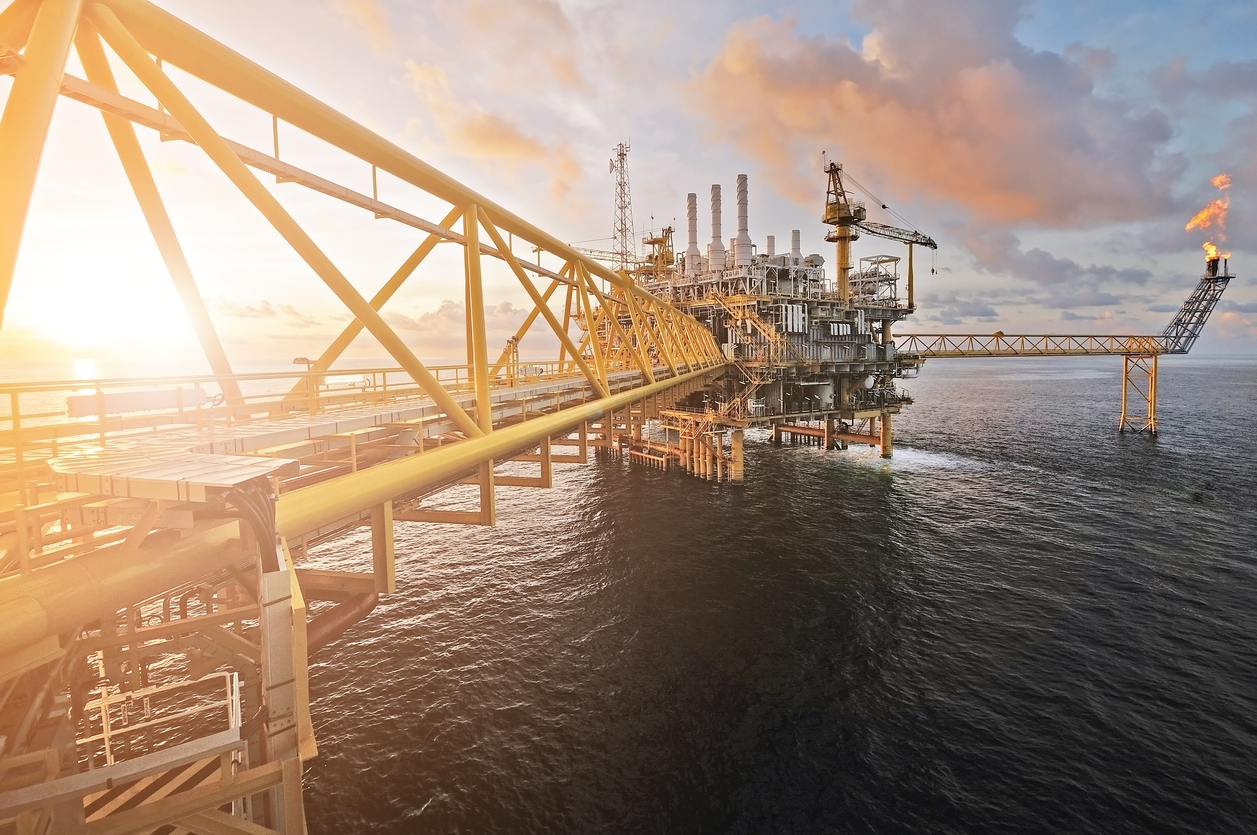Kenny Habetz Injury Law | July 15, 2024 | Oil Rig Accidents

About half a million people are employed in the oil and gas extraction industry, but only a fraction work on offshore oil rigs. Most of the oil rigs are on land, with most offshore rigs in the Gulf of Mexico and the North Sea. There are currently about 240 active offshore rigs that may employ up to 200 workers each.
Oil rig workers face one of the deadliest jobs on earth due to their often remote location and risks, such as chemical exposure, explosions, and heavy machinery accidents. Here is a look at the many dangers of being an oil rig worker.
Machinery and Heavy Equipment
Machinery and equipment pose many dangers for workers.
Accidents may involve:
- Operator error
- Inadequate training
- Mechanical error
- Improper maintenance
- Inadequate machine guarding
- Overloading
- Tipping over
- Electrical shock
- Caught-in or caught-between
Workers are exposed to dangerous equipment, such as rotating wellhead equipment, conveyors, pumps, compressors, and hoist blocks, on a daily basis.
Struck-By, Caught-In, and Caught-Between Hazards
According to OSHA, three out of every five on-site oil rig worker deaths involve being struck by, caught in, or caught between objects. Workers may be struck or caught while working around hazards like heavy equipment, such as cranes, high-pressure lines and hoses, drill pipes, tongs, spinning chains, and hand tools.
Fires or Explosions
One of the greatest risks of working on an oil rig is a devastating fire or explosion. Hydrogen sulfide, vapors, and well gasses can be released from wells and equipment and may be ignited by static, open flames, lightning, hot surfaces, and more.
Common factors that contribute to explosions and fires include:
- Electrical malfunctions in equipment
- Overheating or malfunctioning equipment and machinery
- Human error, like failing to follow safety protocols
- Flammable gasses or liquids being ignited
- Lightning strikes
- Welding or cutting activities sparking a fire or explosion
- Faulty or poorly maintained pipes or valves that cause leaks
- Improperly maintained or secured fuel storage tanks and lines
- Wear and tear or corrosion that causes equipment failure or structural damage
Explosions and fires are shockingly common on offshore oil rigs which may burn for days. According to the Bureau of Safety and Environmental Enforcement (BSEE), there were 17 offshore drilling rig fires between 2015 and 2020. From 2007 to 2020, there were 55 offshore explosions.
Toxic Exposure
Oil rig workers may be exposed to hazardous chemicals, such as toxic fumes and dangerous byproducts of oil drilling. Potential hazards can include inhalation of toxic vapors and chemical burns. This exposure may cause anything from respiratory issues and burns to long-term health risks like cancer.
For oil rig workers, hydrocarbon gasses and vapors (HGVs) are especially dangerous. Acute exposure can cause disorientation and dizziness while affecting the central nervous system, lungs, and eyes. HGVs also cause oxygen displacement, which can pose the risk of immediate death.
Falls
Falls are a common hazard for oil rig workers, who often work at great heights on uneven working surfaces, near open pits, or with unprotected edges. These surfaces can become dangerously slippery from oil spills during maintenance, especially without anti-skid deck plating.
Workers should be equipped with proper training and personal fall arrest systems (PFAS), as well as fall prevention methods like guardrails.
Extreme Weather
Storms, lightning, and other types of extreme weather can be dangerous for onshore workers, but it’s particularly deadly for offshore workers. Storms can cause dangerous winds, heavy rainfall, and powerful waves that can overwhelm and capsize a vessel.
The Ocean Ranger Disaster of 1982 and the DS Seacrest Disaster of 1989 were two of the deadliest oil rig disasters in history. Both were caused by severe storms with devastating waves.
Remote Location With Limited Access To Emergency Medical Care
Oil rig workers may work miles from shore and commute to and from the rig by helicopter. When an accident happens, it may be hours before rescue personnel can arrive. Evacuating workers and transporting them to a medical facility can also be challenging.
Contact the Louisiana Law Firm Of Kenny Habetz Injury Law for Help Today
If you’ve been injured in an oil rig, please call Kenny Habetz Injury Law for a free case evaluation with a Louisiana personal injury lawyer or contact us online. We have offices in Lafayette and Crowley, LA.
Kenny Habetz Injury Law – Lafayette
110 E Kaliste Saloom Rd Ste 101 Lafayette, LA 70508
(337) 399-9000
Kenny Habetz Injury Law – Crowley
604 S Parkerson Ave. Crowley, LA 70526
(337) 329-8883
